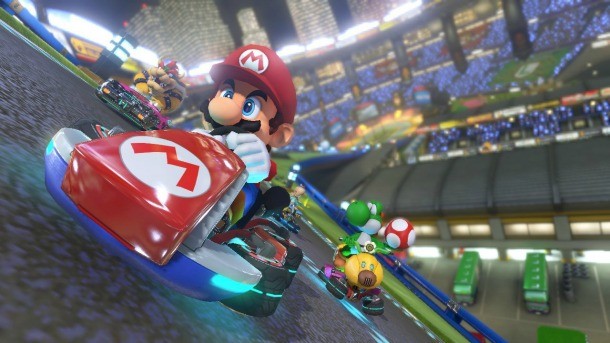Analysis - As The Wii U Limps, Its Software Sales Leap

Along with its first quarter financial results, Nintendo released updated sales figures for its best-selling software. Unsurprisingly, Mario Kart 8 and Pokémon X & Y continue to lead on Wii U and 3DS respectively.
As we dig deeper, we see that the Nintendo faithful are buying just about everything they can get their hands on. Overall software attach rate for the Wii U and 3DS have both climbed in the last quarter, with the former now firmly above six games per console sold. The 3DS sits above four games per handheld in the wild.
Here are the updated sales numbers, related attach rates, and whether the’ve risen or fallen over the past quarter:
Wii U
- Mario Kart 8, 5.43 million, 54.2 percent attach (level)
- Nintendo Land, 4.88 million, 48.8 percent attach (level)
- New Super Mario Bros. U, 4.84 million, 48.4 percent attach (down)
- Super Mario 3D World, 4.3 million, 43 percent attach (level)
- Super Smash Bros. for Wii U, 3.83 million, 38.3 percent attach (level)
- New Super Luigi U, 2.26 million, 22.6 percent attach (down)
- The Legend of Zelda: Wind Waker HD, 1.57 million, 15.7 percent attach (level)
- Wii Party U, 1.57 million, 15.7 percent attach (new entry)
3DS
- Pokémon X & Y, 13.99 million, 26.4 percent attach (down)
- Mario Kart 7, 11.92, 22.5 percent attach (level)
- Pokémon Omega Ruby and Alpha Sapphire, 10.27 million, 19.4 percent attach (level)
- Super Mario 3D Land, 10.10 million, 19 percent attach (level)
- New Super Mario Bros. 2, 9.3 million, 17.5 percent attach (level)
- Animal Crossing: New Leaf, 9.17 million, 17.3 percent attach (level)
- Super Smash Bros. for 3DS, 7.04 million, 13.3 percent attach (level)
- Luigi’s Mansion: Dark Moon, 4.54 million, 8.6 percent attach (level)
- Tomodachi Life, 4.3 million, 8.1 percent (level)
- The Legend of Zelda, Ocarina of Time 3D, 3.77 million, 7.1 percent attach (level)
While the Wii U has struggled to find purchase with consumers, it’s clear that the first-party titles are still finding success. Gamers that do own one of the 10 million consoles in the wild are hungry for more to play, as evidenced by the huge first quarter sales of Splatoon, accounting for over one-third of all Wii U software sold worldwide during the quarter (and with just a month on store shelves).
Suffice it to say that Nintendo doesn’t have a software problem beyond not being able to produce enough new titles on its own to support the console. Nearly every release is finding a substantial audience with absurdly high attach rates for the platform. With the exceptions of a few successful third-party entries (Skylanders, Disney Infinity, and Lego games), Nintendo's offerings are all that console owners have to look forward to, though.
While these attach rates would surely drop with more consoles sold at retail, the software sales indicate a consumer base that is quite eager to snap up whatever is released for the Wii U. As you can see with the attach rate differences even between the Wii U and 3DS, consumers are willing to purchase almost anything that Nintendo puts out.
If there’s anything to learn from the off-balance attach rates (something which I first wrote about in January 2014), it's further evidence of the communication problems that plagued the system’s launch. As sales languished and third-parties stopped producing for the console, Nintendo didn't make a good case for owning a Wii U. This left the platform in a hole from which it never dug out.
The quality of the software isn't the problem, with strong critical acclaim and huge proportional uptake by console owners. The real issue is so many of these titles came too late. By the time first-party caught up to consumer expectations, that's all that was left and the Wii U had lost its potential as a primary gaming system for most consumers.
Nintendo can learn from these lessons. Improved communication with a broader consumer population, front-loading the next console launch with meaningful first-party offerings, and wooing third-party publishers back to the fold need to be primary motivators as the company readies a reveal of the enigmatic NX next year.

Get the Game Informer Print Edition!
Explore your favorite games in premium print format, delivered to your door.
- 10 issues per year
- Only $4.80 per issue
- Full digital magazine archive access
- Since 1991









